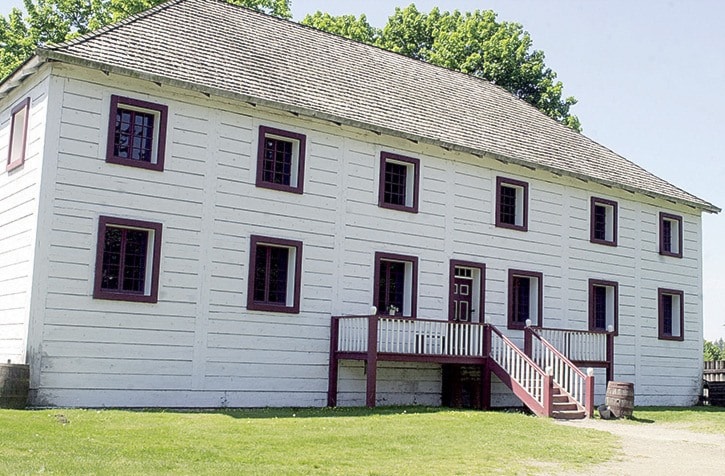Significant upgrades and renovations are in the works for the Fort Langley National Historic Site, announced just days ahead of the annual Douglas Day ceremonies.
The former Hudson Bay Company trading post, located along the Fraser River, was the birthplace of B.C. in 1858, and that historic milestone is celebrated every year on Nov. 19.
This year, Douglas Day comes on the heels of an announcement that the fort will undergo upgrades and infrastructure improvements, confirmed Brigitte Wieronski, the fort’s national historic site and visitor experience manager.
“As part of our planning process, Parks Canada identified a number of projects at Fort Langley, and we are thrilled to be proceeding with this work,” she told the Langley Advance.
It’s unclear yet exactly how much the local upgrades – in particular – will cost between all four projects.
“We are in the assessment and design stages right now, and do not have a further breakdown of costs at this time,” Wieronski said.
The federal government unveiled last week’s plans to spend $38 million on four of its national parks in B.C., including Fort Langley, the Gulf of Georgia Cannery National Historic Site in Richmond, the Fort Rodd Hill National Site in Victoria, and the Pacific Rim National Park Reserve on Vancouver Island.
STORY CONTINUES BELOW

Wieronski was able to break down, in more broad terms, the money allocations impacting this plus other parks in the region.
• $4.1 million was assigned to Fort Langley and Fort Rodd Hill National Historic Sites for rehabilitation of the water, sewage, and ground water drainage systems.
Currently, the water, sewage, and ground water drainage systems in Fort Langley are being mapped and assessed to determine what work needs to be completed, said Wieronski, who joined Parks Canada and the local fort in March.
• $550,000 has been assigned for Fort Langley National Historic Site and the Gulf of Georgia Cannery for their fire suppression systems.
“Only the buildings that require upgrades will receive the work,” Wieronski said of the Fort Langley site. “Once the initial design for this project is completed, we will have a better idea of the timeline.”
• $682,000 was assigned for completion of what are said to be deferred projects specific to Fort Langley’s cooperage, washrooms in the welcome centre, and the elevators.
“Very little work has been done to the buildings since they were originally built, so we are excited to be rehabilitating these structures now. The elevators are original to the site, [the] washrooms will benefit from accessibility improvements, [and] facilities and lighting in the cooperage will be upgraded.”
• $4.9 million assigned to the refurbishment of signs at the Langley, Victoria, and Richmond historical sites.
“The public can expect to see new way-finding signs to assist visitors in locating the site,” Wieronski said, noting that design is expected to be complete this fiscal year.
She said sign replacement will begin in the next fiscal year.
STORY CONTINUES BELOW

Overall, this work is part of a $2.6 billion investment by Parks Canada to rehabilitate infrastructure assets within national historic sites, parks, and marine conservation areas across Canada, Wieronski said.
“Since the fort was created since the 1800s, there have been a lot of utilities installed and decommisioned over the years,” Wieronski explained. “We are trying to determine the components of the underground utilities still in use and to assess what needs to replaced or upgraded.”
The public will not physically see much of a change to the fort. Most of the local undertakings are infrastructure projects and improvements to the underlying structures at the fort.
“But these upgrades will ensure Canadians can enjoy and experience one of Canada’s incredible historic places for many years to come,” Wieronski said. “We expect there may be some small inconveniences to visitors over a short period of time, but overall there will be little interruption to the public.”
STORY CONTINUES BELOW
Douglas Day celebration
On Nov. 19, 1858, James Douglas proclaimed British Columbia a Crown colony in Fort Langley’s Big House.
Every year, the Fort Langley National Historic Site celebrates B.C.’s birthday and honours Sir Douglas – the first governor – with a 10 a.m. procession through the fort.
They invite people to attend, and take their turn standing on the spot where B.C. actually became B.C. 158 years ago.

